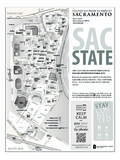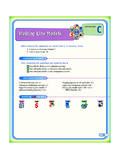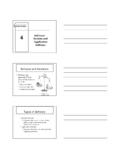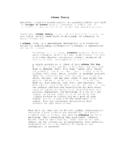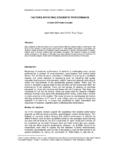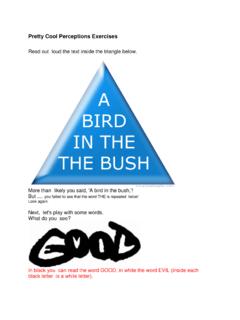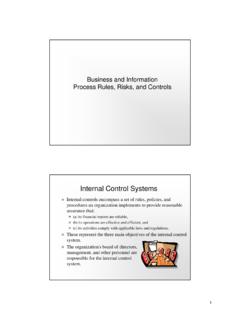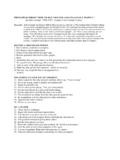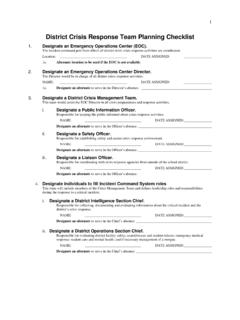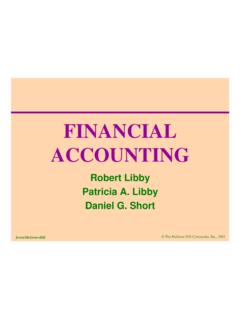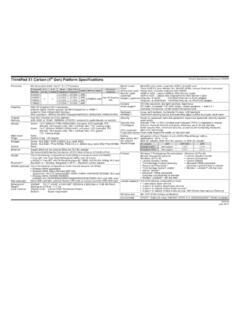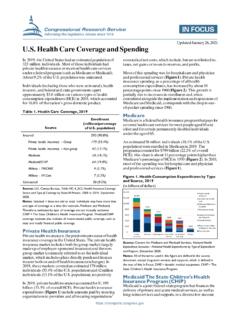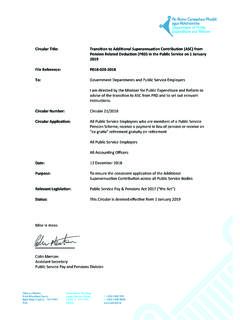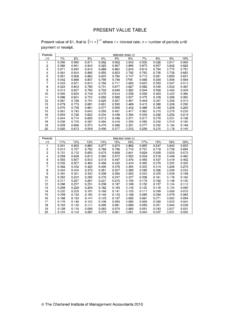Transcription of Mendelian Inheritance & Probability
1 1(CHAPTER 2- Brooker Text) Mendelian Inheritance & ProbabilityJanuary 31 & Feb 2, 2006 BIO 184Dr. Tom Peavy2 TtYy x ttyyWhat is the expected phenotypic ratio among offspring? Problem Solving3Tt RR x Tt RRWhat fraction of the progeny will be Tall and Round?(pg 38)4 Alternative = Forked Line MethodTt RR Yy x Tt RR YyWhat fraction of the progeny will be Tall, Round, and Green?5 Probability calculations are used in genetic problems to predict the outcome of crosses To compute Probability , we can use three mathematical operations Product rule Sum rule Binomial expansion equationPROBABILITYP roduct rule The Probability that two or more independent events will occur is equal to the product of their respective probabilities Note Independent events are those in which the occurrence of one does not affect the Probability of another What are the odds of 3 heads in a row?
2 6 Sum rule The Probability that one of two or more mutually exclusiveevents will occur is the sum of their respective probabilities What are the odds of rolling a 3 on a single die? What are the odds of rolling a 3 ora 4 on a single die?Binomial Expansion Equation Represents all of the possibilities for a given set of unordered eventsn!x! (n x)!pxqn x where P = Probability that the unordered number of events will occur n = total number of events x = number of events in one category p = individual Probability of x q = individual Probability of the other categoryP = 7 Note: p + q = 1 The symbol!
3 Denotes afactorial n! is the product of all integers from n down to 1 4! = 4 X 3 X 2 X 1 = 24 An exception is 0! = 1 Question Two heterozygous brown-eyed (Bb) individuals have five children What is the Probability that two of the couple s five children will have blue eyes?The Chi Square Test A statistical method used to determine goodness of fit Goodness of fit refers to how close the observed data are to those predicted from a hypothesis Note: The chi square test does not prove that a hypothesis is correct It evaluates whether or not the data and the hypothesis have a good fit8 The Chi Square Test The general formula is 2 = (O E)2E where O = observed data in each categoryE = observed data in each category based on the experimenter s hypothesis = Sum of the calculations for each category Consider the following example in Drosophila melanogaster Gene affecting wing shape c+= Normal wing c= Curved wing Gene affecting body color e+= Normal (gray) e = ebony Note.
4 The wild-type allele is designated with a + sign Recessive mutant alleles are designated with lowercase letters The Cross: A cross is made between two true-breeding flies (c+c+e+e+ andccee). The flies of the F1generation are then allowed to mate with each other to produce an The outcome F1generation All offspring have straight wings and gray bodies F2generation 193 straight wings, gray bodies 69 straight wings, ebony bodies 64 curved wings, gray bodies 26 curved wings, ebony bodies 352 total flies Applying the chi square test Step 1: Propose a hypothesis that allows us to calculate the expected values based on Mendel s laws The two traits are independently assorting Step 3.
5 Apply the chi square formula 2 =(O1 E1)2E1(O2 E2)2E2(O3 E3)2E3(O4 E4)2E4+++ Step 2: Calculate the expected values of the four phenotypes, based on the hypothesis10 Step 4: Interpret the chi square value The calculated chi square value can be used to obtain probabilities, or P values, from a chi square table These probabilities allow us to determine the likelihood that the observed deviations are due to random chance alone Low chi square valuesindicate a high probabilitythat the observed deviations could be due to random chance alone High chi square valuesindicate a low probabilitythat the observed deviations are due to random chance alone If the chi square value results in a Probability that is less than (ie.)
6 Less than 5%) The hypothesis is rejected Step 4: Interpret the chi square value Before we can use the chi square table, we have to determine the degrees of freedom (df) Thedfis a measure of the number of categories that are independent of each other df= n 1 where n= total number of categories In our experiment, there are four phenotypes/categories Therefore, df= 4 1 = 3 Refer to Table Genetics &Pedigrees1213 Huntington Disease: studies of a Venezuelan family14 Inheritance of Cystic Fibrosis
